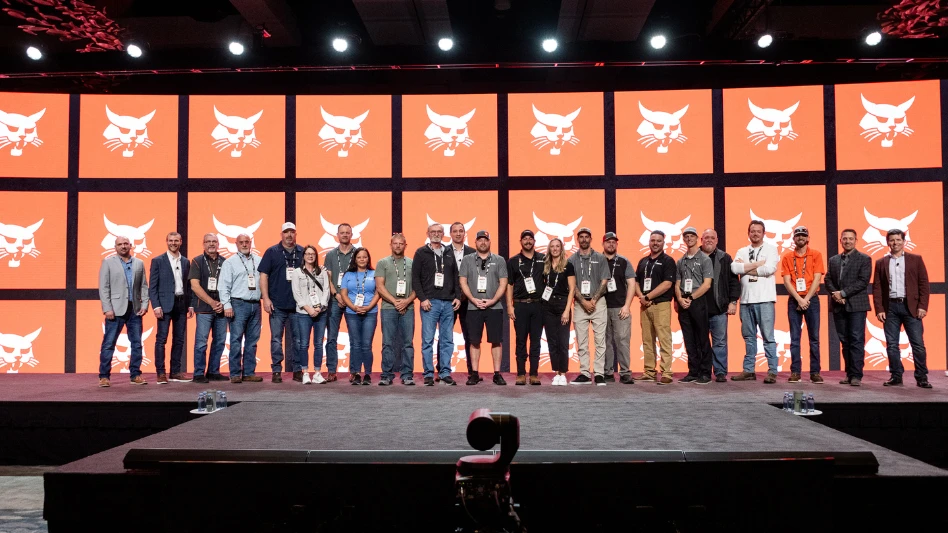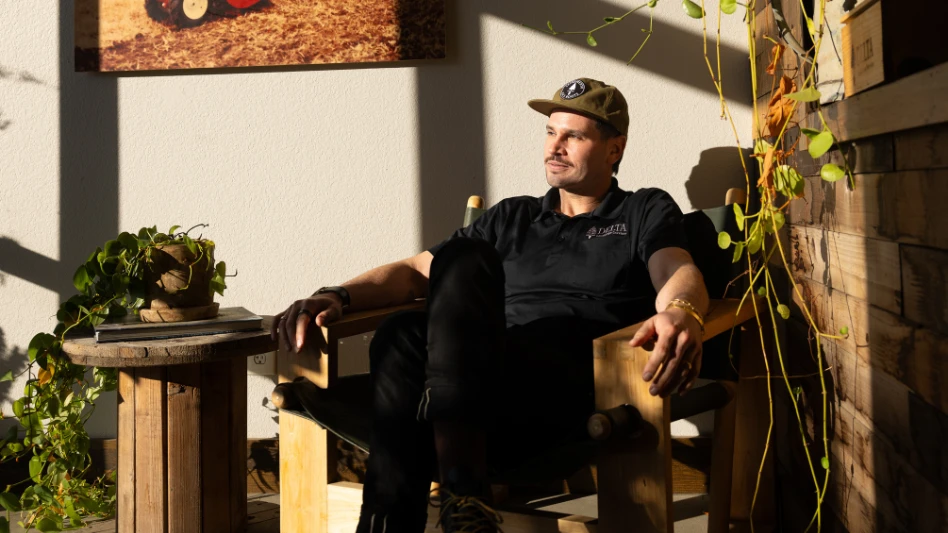Charging new clients design fees and sticking to budget are lessons many landscape design firms have learned along the way. As it turns out, some people can get away with breaking rules; others need to stick closely to the status quo. For example, during the late 1990s, a client approached Lake Bluff, Ill.-based Mariani Landscape with a $100,000 budget for a Japanese garden, Frank Mariani told a crowded room of contractors at an Ohio Landscape Association event last fall.
|
|
The project required extensive research, as the firm had never designed a Japanese retreat of this scale. The design team delved into the design process, reviewing books on the subject, studying hydrology and consulting with a Japanese garden specialist to critique minute matters like stone placement. It took Mariani’s team two months to produce the original concepts – for which they did not charge the client. When it came time to present the proposal, there was just one problem – the budget. “It was just a minor change,” Mariani explains. “I told the client, you’re going to have to add an extra zero.”
Mariani sold the million-dollar job (see photo on page S8) – but concedes he broke every rule in the book. Not all contractors have the reputation and finesse to take such risks. But no matter the size of the company or scope of a project, everyone can learn from the dedication Mariani’s company practices and the confidence he exudes.
“Confidence is a look at sales from more of a psychological point of view,” says Pat Lynch, residential design and sales for Peabody Landscape Group, Columbus, Ohio. It can be cultivated with the right mix of professionalism and sales experience, Lynch says. “When you talk about confidence, you’re talking about image, knowledge and experience. It’s not using slick closing lines,” he adds.
Portraying your company as professional is the first step to residential sales success. When your company places a value on its design work, the marketplace will, too. Lead qualifying is the first component of this process. Sales begin – and your company’s image is projected – from the moment a client calls your office.
“Our key is having that initial conversation on the phone be very valuable,” says Randy Sorrell, president of NatureWorks Plus in Carmel, Ind. “We ask the right questions so the client appreciates that we’re not every other landscaper out there.” These questions include: Who referred you to our company? What’s your budget? Where do you live? What’s the project scope? Do you plan to implement it in phases or accomplish it immediately?
“If we believe it’s a worthwhile opportunity, we’ll offer an initial complimentary consultation and we let them know in the initial phone call that we charge for design work,” Sorrell says. “We find that if folks don’t want to pay for a design, we’re not likely to get their business. We’ll lose a few opportunities here and there, but we feel strongly that we’re degreed, educated professionals and need to be compensated for our professionalism.”
Charging design fees is the best lead qualifying method there is, designers say, noting it ensures the client is committed, prepared to pay for quality and not just looking for the lowest bidder. It also promotes the industry as a professional one and instills confidence in the client that you’ll deliver a job well done.
Design fee structures vary from firm to firm – sometimes based on hourly rates and sometimes based on the overall scope of a project. Design/build firms say they usually charge $300 and up for a set of plans. Some companies will credit part of that cost to the final price of the finished project. Landscape designers generally do not charge repeat or existing customers for designs, as they’re much more likely to secure the business and don’t anticipate a bidding situation. “Existing clients usually get special consideration,” Lynch says. “If they decide they don’t want to do anything with us, I’ll charge them a certain amount to recoup design work.”
Another way to qualify leads is by the time of day you set up appointments, as Peabody Landscape does. “We set appointments between 9 a.m. and 4 p.m.,” Lynch says. “A lot of our clients are professionals who work all day. If they’ll take the time out to meet with you, then you know they’re serious.”
Once firms have ensured their customers are a good fit, it’s time for the initial consultation. Design and sales professionals emphasize the importance of tuning in to your customers during this phase. “One of the biggest mistakes salespeople make is they talk too much and don’t listen enough,” says Bob Kinnucan, president of Kinnucan, a full-service landscape company in Lake Bluff, Ill. In addition to gathering basic information like type of project, time frame and budget (which may already have been collected on the telephone), designers should probe deeper. “Ask who has done work for them before, what they like about that work and why they’re changing contractors,” Kinnucan says. “Most people have had good and bad experiences with landscape contractors, just like all other professions.”
By letting the customer do all the talking at first, designers can narrow their sales presentations to include only the information relevant to a client’s wants and needs. This way, you don’t confuse the client with too much information, Lynch says, explaining one major sales mistake is giving people too many options. Getting as much feedback as possible from clients is essential to creating designs they’ll like. “The easiest person to sell is a self-made person,” Lynch says. “If you can position it so it’s their idea, then they’ll buy it.”
Rich De Palma uses the same tactic. During the first site visit with a client, while walking the property, he takes the opportunity to get to know the client. “Feel them out; get an idea of what their interests may be,” says De Palma, president of landscape architecture for Landscape Development, Ventura, Calif. He takes some cues by coming right out and asking and others by observing. Do the clients have kids? Do they entertain frequently? What are they wearing? What kind of cars do they drive? Obtaining information like this is De Palma’s way of ensuring he produces a unique landscape for every client, not a cookie-cutter design.
After his firm receives a design fee from a client (which is typically $1,500 to $2,000 for jobs $200,000 and up), De Palma may begin designing on the spot, making recommendations and possibly doing thumbnail sketches, to get buy in from his clients. “They feel like they’re becoming involved in the design,” he says.
Lynch says he rarely draws sketches for clients during initial meetings. “When people get something for free they don’t put a lot of value on it,” he says. “And there’s a chance they can take those ideas somewhere else.” If a client asks for ideas upon first meeting, he tells them, “I want you to know that you have my best, well thought out ideas for this job – I can’t really come up with those in a few minutes.”
On the other hand, for single-faceted projects less than $5,000 (a 150 square-foot brick patio, for example), Sorrell gives clients the option of a “quick sketch,” for which he charges $100. This option includes an on-site sketch, consultation and pricing. “Less than 10 percent of clients ask for these, but if it’s a small brick patio or something simple and basic, it’s a good strategy to sketch and price on site,” he says. “We have to be diligent about how we use our time. It’s tough to charge a homeowner the appropriate design fee if you spend all your time driving back and forth.”
Another way to help secure a sale is to set the second appointment before you leave the first one. “Don’t just say ‘I’ll get back to you,’” Lynch says. “Before you leave one appointment, make sure you have another one set.” Peabody Landscape also incorporates technology into its first meeting with a client by equipping designers with laptop computers and a custom DVD, which tells the company’s story and includes a portfolio of photographs.
PROPOSAL PRESENTATION. Some firms use the second meeting, when the presentation of the proposal typically takes place, to leverage their company image by bringing clients to their offices. This technique can potentially “wow” customers, assuming the facility is in good shape.
Peabody’s headquarters, for example, is not a typical landscape facility. The property was originally a turn-of-the-century working farm, elements of which have been restored or recreated to house offices and equipment. The second part of Peabody’s residential sales process involves showing off the charming grounds to clients. “We want them to know we have the infrastructure and manpower to do whatever job they need,” Lynch says. “It sets us apart from that one-truck guy.”
In addition, Peabody has strategically placed awards plaques in the hallway guests walk through to get to the conference room. “We often tell clients that quite possibly their job can be one of these plaques on the wall,” Lynch says. “People love hearing that.”
Sorrell’s firm, NatureWorks Plus, sees bringing clients into the office as a way to set itself apart from the competition, however the company has had some difficulty executing the idea due to lack of parking and office structure. “We moved into a new location and outfitted our office with the intent to bring clients in,” he says. “We have done it successfully, but haphazardly.” The company hopes to set up a conference room where designers will deliver their presentations by connecting their laptops to a large flat-screen TV.
During the proposal phase graphics and knowledge are power, sales and design professionals say. “We always forget that most clients don’t understand blueprints and they really don’t know plant material,” Kinnucan says, explaining why landscape plans alone aren’t effective. “They want to know what it’s going to look like.”
His firm uses a digital imaging program to augment residential property photos with aspects of the design proposal – including plants and hardscape elements. “The digital imaging design program is probably the most powerful tool we have,” he says.
Other companies’ proposals take different shapes. For example, over the past year Peabody Landscape created an internal design Web site (see image, top right) to simplify the proposal process. The site is a photo library of landscape elements, including plant material, sidewalks, benches, fireplaces – anything that might be specified in a design. During a proposal meeting, if a client has a question about the way an aspect of a project will look, the designer can easily locate an example image and project it onto a screen for the client to see.
While presentation plays a role, it all comes down to how confident a client is in the company’s ability to execute. Designers must either know their products and capabilities inside and out or bring along an expert to give clients a sense of security, Lynch says. “If I’m doing a pool and I don’t know everything about that pool, I’ve got the pool expert right there with me,” he says. This technique ensures customers that you’ll finish the job as promised. “The client thinks, ‘They may be more expensive, but they’re going to get the job done right,’” Lynch says. “I don’t usually get jobs done because I’m less expensive; I get them because clients know I can get the job done.”
Finally, don’t forget follow-up. It’s one simple thing all design and sales professionals can do to secure a sale. “Sometimes you get a job just by calling people back and asking for their business,” Lynch says.
Landscape Development often follows up with a gift. “We may send them something we’ve learned they like,” De Palma says. “If I’ve found out they like the Lakers, I may send them Lakers tickets. That’s establishing the relationship,” he says, noting that budgeting for small gifts is a good approach for firms of any size. “Whether your clients are spending $5,000 or $1 million – they need to feel like they’re millionaires. You can at the very least send a post card saying, ‘Hey, it was great to meet you.’ Keep your name in front of them; get to know them. You want them to recommend you to their neighbors. The only way to do that is to make that client a raving fan.”

Explore the January 2007 Issue
Check out more from this issue and find your next story to read.
Latest from Lawn & Landscape
- North by Northwest's charitable act for the Ronald McDonald House Charities
- Coxreels expands V-100 Series product line
- Landscape Workshop expands with 2 acquisitions
- Wilson360 adds Daniel Grange as new consultant
- Batman and business
- CH Products releases new tree stabilizer
- Savannah Bananas founder Jesse Cole to speak at Equip Exposition
- Catch up on last year's Benchmarking report






